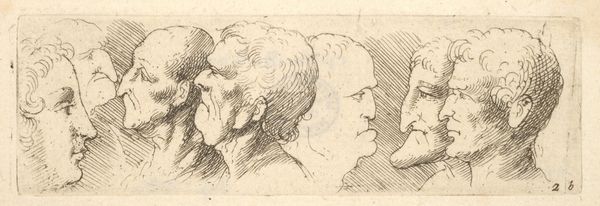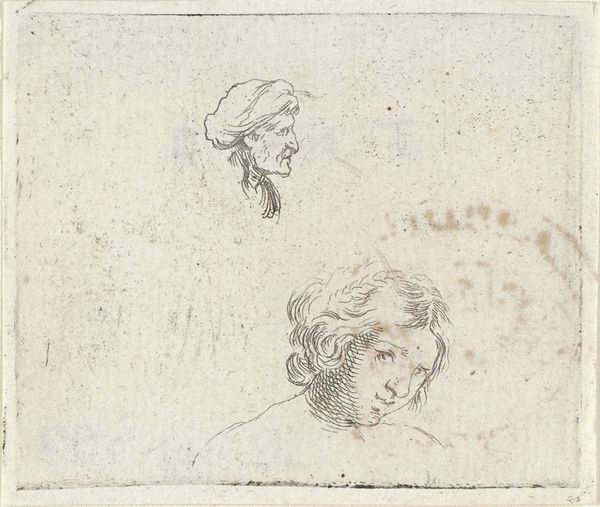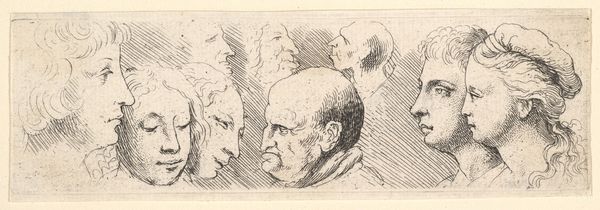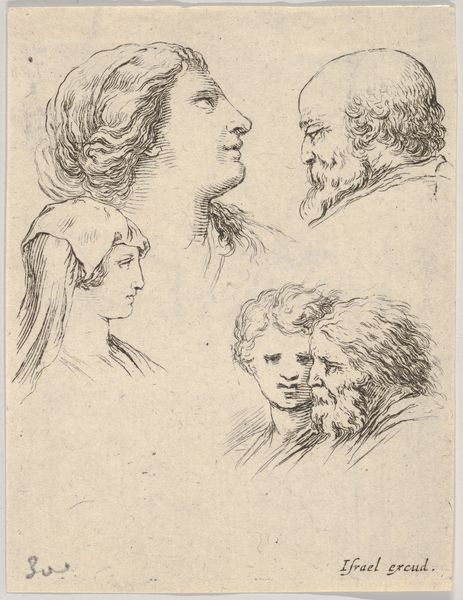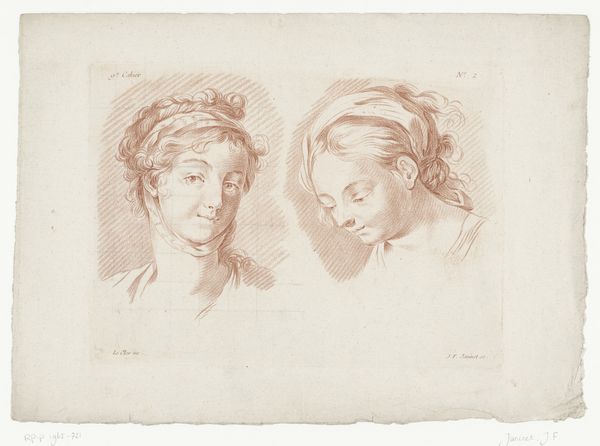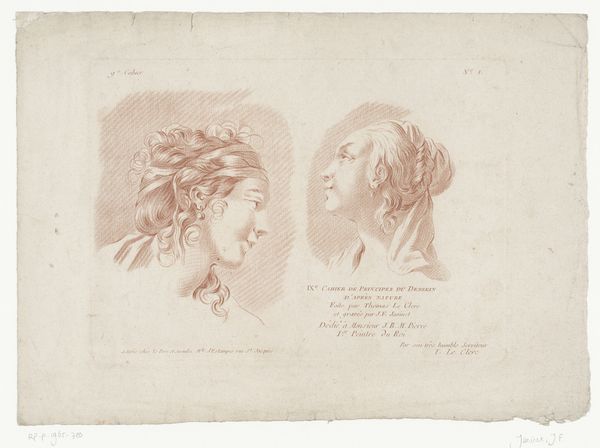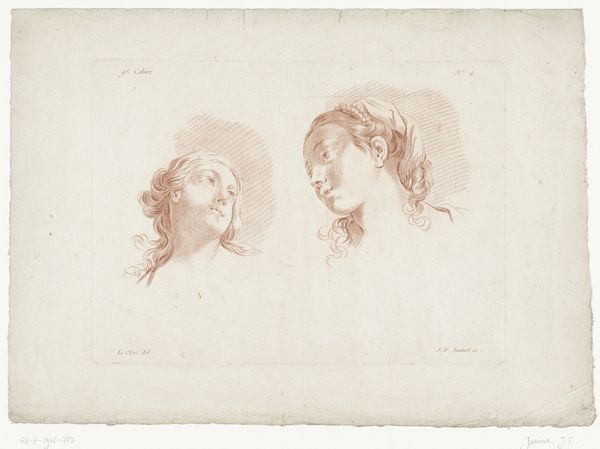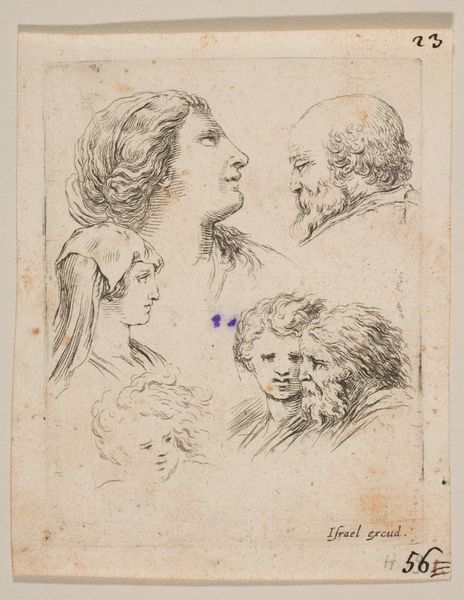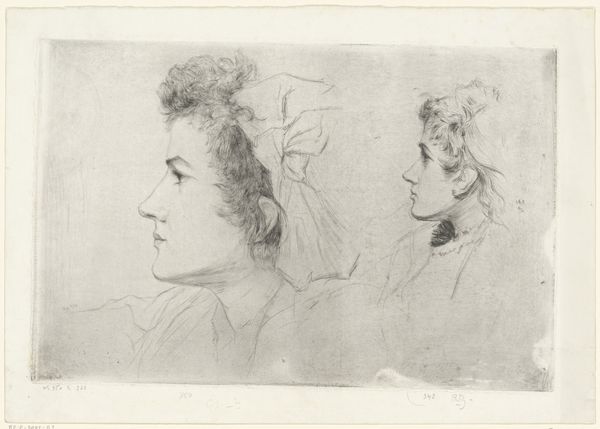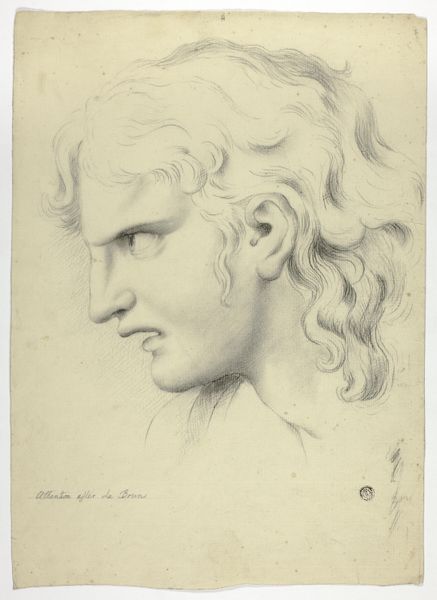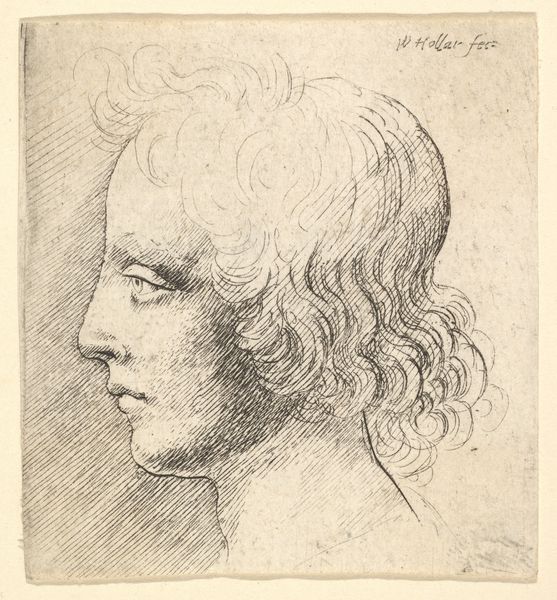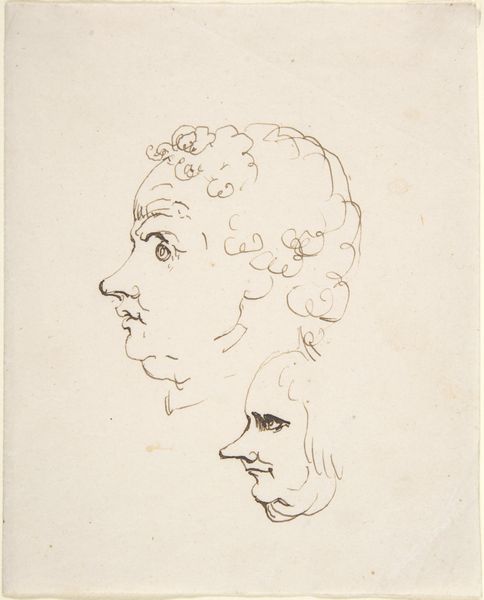
Three profile heads, one in outline only 1644 - 1652
0:00
0:00
drawing, print, etching, graphite
#
portrait
#
drawing
#
baroque
# print
#
etching
#
pencil drawing
#
men
#
graphite
#
portrait drawing
Dimensions: Sheet: 2 3/8 × 4 3/8 in. (6 × 11.1 cm) cut on platemark
Copyright: Public Domain
Curator: This is Wenceslaus Hollar's etching, "Three profile heads, one in outline only," dating roughly from 1644 to 1652. It resides here at the Metropolitan Museum of Art. Editor: My initial reaction is one of quiet introspection. The lines are delicate, almost fragile, and the contrasting levels of detail create a captivating sense of depth. I am immediately struck by the passage of time that is implicit in these faces. Curator: I agree. Consider how Hollar uses portraiture not merely as representation, but to examine the social hierarchies embedded within visibility. Whose faces get preserved, and why? The unfinished sketch speaks volumes about marginalized figures and representation. Editor: I'm drawn to the distinct character conveyed in each profile despite the etching's minimalist approach. The sharp lines defining the elder’s face speak of experience and time, while the softness in the rendering of the youthful figure hints at innocence and potential. It really captures something deep in our collective consciousness. Curator: Absolutely. And we must look at Hollar's identity too: as a Bohemian artist working in England during a period of intense social and political upheaval, Hollar positions these faces within the context of exile, displacement, and perhaps, resistance. Who were these figures, what class did they occupy? Editor: I hadn't considered the political implications so directly. However, his skillful etching evokes memories, historical references, and psychological depth, reflecting universal stories of resilience. There is also, for me, a sense of loneliness suggested in each distinct but shared profile. Curator: The historical and the personal, that's what makes it a powerful work. It subtly critiques the traditional power dynamics inherent in portraiture. What voices do we prioritize? Editor: Yes, and each profile also appears to be a contemplation on identity. I keep wondering who the subjects are – what their individual stories might be. What makes this artwork a universal visual experience is that they encourage viewers to examine themselves too. Curator: Looking at the work through both our perspectives offers us a richer understanding of it and ourselves. Art can connect us, it helps us become more aware of who we are and what’s possible. Editor: Agreed. And with an etching as seemingly simple as “Three profile heads, one in outline only”, we discover how much the artwork allows for us to project meaning based on our lived experience.
Comments
No comments
Be the first to comment and join the conversation on the ultimate creative platform.
